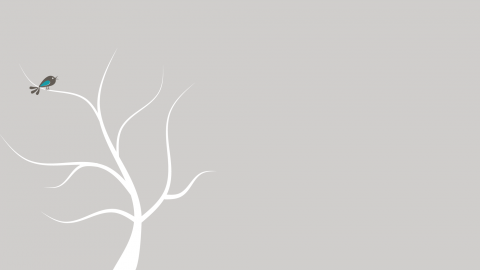I visited the PMA two Sundays ago, 23 March, to see the Vincent Van Gogh exhibit, ‘Up Close’. The angle of the exhibit was an attempt to make sense of Van Gogh’s unique up close focus on objects, especially with respect to his imagery of nature. The curators highlighted this aspect of his love for nature by not including a single portrait within the exhibit; though, it did include several paintings of shoes, Japanese prints of the type that influenced Van Gogh’s composition and use of color, and photographs that while Van Gogh claims to have disliked the photographic nature, may have influenced him (though the connection was not very strong, neither between whether he was influenced by it, or its relationship to the exhibit). The entire exhibit comprised of pieces brilliant in their use of color, with large expanses of exotic colored canvas speckled with the detail that was his brush. All-in-all, the exhibit really was a treat, and a unique and interesting take, never before evaluated, on Van Gogh’s usage of the ‘up close’.
A few days after visiting the exhibit, and as I continue to read the new biography on him ‘Van Gogh: The Life’ by Steven Naifeh and Gregory White Smith, I began to think how funny my own relationship to Van Gogh really is. Since I was a young child I can remember always having a special fondness for Van Gogh. I cannot recall the first time I saw a painting by him, either in person or print; but perhaps during my first visit to the Met in NYC when I was seven or eight is when we had our first introduction. Aside from liking his use of color and spatial awareness with his use of shapes and brushwork, I never quite understood my connection to his work – it always felt like I understood it, but I couldn’t figure out why.
Much like Van Gogh I have always felt a heavy sense of isolation from my family, with few true friends in my life, and now in my early adult years yearning, if not desperately, for the everyday companionship, and love, of another human being; any human being.
If one was to walk into my grandmother’s house, he might be expected to find two or three photographs, not of me, but including me. There may be only one that is specifically of me (little league baseball picture maybe?). Of my brother and sisters and cousins, you might see two or three times my own occupation of wall space. At my parents, I am represented by maybe four or five pictures. And if you perused the writings of my late grandfather, the English Professor, and all-day all-night professor of proper moral teachings, with the vulgar mouth of a hungry vulture, lurching over its prey with intent to kill, it would not be unlikely to find common mocking references of me, and perhaps even the question of my existence. And I have never been able to understand any of this; not in my childhood, teenage, and now adult years; and so, I self-medicate, as I have nearly all of my life, with silence.
The one obvious thing about my family is their obsession with habit, and absolute fear of deviating from it; even if its for a brother, a nephew, or a son. In the course of my family’s habit I have somehow become part of the tangle of thoughts and experiences that is their outside; their external. While I am certain, if not by proxy, they still love and accept me, I do not believe they attribute any further thought to or about me. On my rare visits home (never am I visited here without force from my end) I am never queried about my job, or about my adventures and hours spent seeing art exhibits, or attending First Friday, or having dinner parties, when they occur. And the question of whether or not I have a girlfriend ceased being asked years ago. Since then, never have I yet been asked if I have a boyfriend, despite my suspicion that they all know my preference in life (they’ve met several past boyfriends without the explicit introduction of, ‘This is my boyfriend.’). It’s quite sad to think of any more of a synthetic notion to impose some degree of familial intimacy upon persons, and especially families, than those I suffer – but that is how I feel everyday.
When one member of the family is so isolated, as a product of habit of the inner family, the heartfelt love of that family is a disingenuous gesture against any relationship between the isolated person and other family members. We must confront and alleviate. But I revert, and keep quite. I spend my time with my nose in books, learning as much as I can; with my eyes stuck to paintings, taking in the aura of existing as a part of the sublime; of the all natural and powerful universe, like that sense of universal existence when standing before a Mark Rothko painting. Perhaps what may be considered the ultimate self-imposed insult, I’m soon pursuing a PhD in art history. While it may be a part of my own sanctioned isolation from my family, it makes me happy. Delving into books and art reminds me of my childhood, and at this moment in my life, that’s the last time I can recall being happy.
Ironically, one of the first paintings I did, entirely independent and with some seriousness, was done with the influence of Van Gogh’s painting La Chambre à coucher (The Bedroom) 1889, and his paintings of chairs in mind (Vincent’s Chair with His Pipe, 1888, and Gaugain’s Armchair, 1888). My own painting was quite small, and composed of a whicker chair in the corner of my grandparent’s sitting room. I painted the chair as if I was looking down on it from an angle, directing all four seams of the walls inward toward the chair. The chair subsequently appeared isolated, and lonely; held within the confine of those constricting lines. Also, although not done intentionally, the chair is painted in metallic yellows and browns, as are the walls done in a somewhat iridescent white, creating an effect suggesting the chair is of some celestial or Godly sort. This reminded me very much of the sun in Van Gogh’s The Sower (1888), conspicuously appearing just at the apex of and behind the head of a sower, as if to suggest a halo; and of the background that is a starry night, in Portrait d’Eugene Boch (1888). While in these instances the representation may be a suggestion to the holy, specifically in relation to their actions – the sower sows the earth full of life, and helps to sustain life through its production of food, and Eugene Bach was obviously elevated to a celestial status through his own title for his portrait of Boch, The Poet – Van Gogh held poets in the highest regard all throughout his life (and rightfully so!). While the essence of my glowing chair may not directly reflect the elevation of an individual to a holy status, I do still find it an interesting characteristic of the relationship.
Perhaps, after all, and with more to come, I understand a little more of my connection to Van Gogh than I thought; and of myself.



